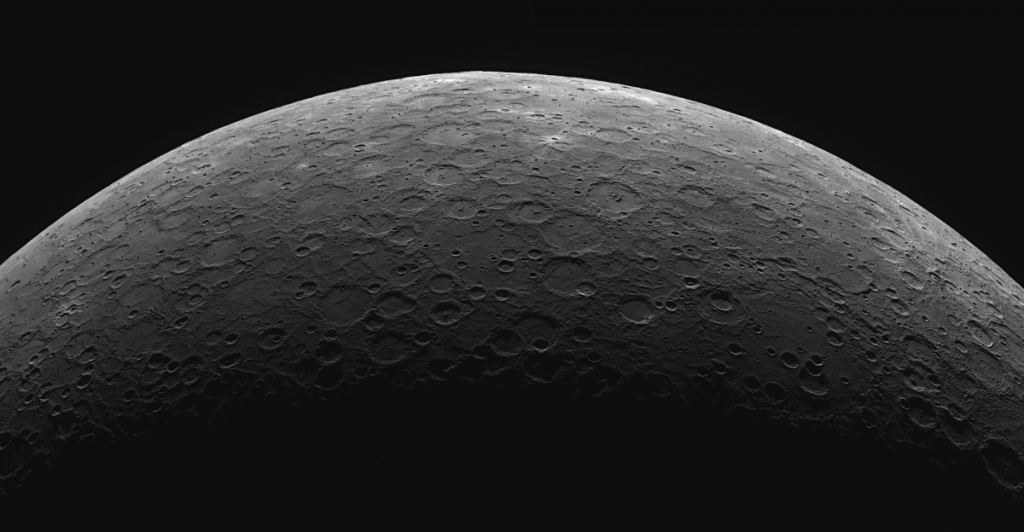There’s a star system out there with three super-Earth planets and two super-Mercuries. Super-Earths are fairly familiar types of exoplanets, but super-Mercuries are rare. Those are planets with the same composition as our own Mercury, but larger and denser.
Yet, here’s HD 23472, showing off two of eight known super-Mercuries in the galaxy. A team of researchers at the Instituto de Astrofisica e Ciencias do Espaco in Portugal discovered these two dense inner planets. Their study is focused on small exoplanets and their compositions, and how position, temperature, and the properties of their stars affect them.
The team chose HD 23472 as a candidate to study exoplanets and the transition between having or not having an atmosphere. It could be related to the evaporation of an atmosphere by irradiation from the parent star. The discovery of two super-Mercuries in the system was unexpected, according to team leader Susana Barros.
“The team found that this system is composed of three super-Earths with a significant atmosphere and surprisingly, two Super-Mercuries, which are the closest planets to the star,” she said. This artist’s concept shows a five-exoplanet system similar to the one being studied. At HD 23472, however, there are two Super-Mercuries orbiting the star.
Courtesy NASA Ames/Kepler/K2 Mission. What’s a Super-Mercury and Why so Rare? To get a handle on these rare planets, take a look at our own Mercury. It orbits closest to the Sun.
So do these two planets. Structurally, it’s quite dense, as these super-Mercuries are. What we don’t know is their internal structure.
If they’re like our Mercury, then they should each have a molten inner core as it does. In our Mercury, that core is surrounded by a solid iron sulfide outer core. A relatively thin crust made of silicate rocks lies at the top.
Mercury also has a magnetic field. The temperature on its surface ranges up to 700 K (427 C), although the poles remain out of the sunlight and very cold. Basically, it’s a small overheated planet.
And, Mercury has no atmosphere but does have an “exosphere”. That’s a thin sheath of atoms of hydrogen, helium, oxygen, calcium, and others. It doesn’t hang around long and gets carried off by the solar wind, which also feeds the exosphere.
Atoms of other elements come from the surface or are delivered by cometary impacts (in the case of water vapor). Mercury’s desiccated, overheated appearance is due to its proximity to the Sun. It might have had a more substantial mantle and crust early in its history.
But, that likely got blasted off by impacts. Mercury is a rarity even in our own solar system. And, scientists didn’t expect to see many of them around other stars.
Yet, they’re out there. Do they have similar interior characteristics to our own Mercury? And, could their histories be similar? Those questions remain to be answered. How Do Super-Mercuries Form? It’s Still an Open Question Barros’s team’s discovery of two super-Mercuries has some promising areas of research—and some puzzles.
“For the first time we have discovered a system with two super-mercuries,” she said. “This allows us to obtain clues about how these planets were formed, which could help us exclude some possibilities. For example, if an impact large enough to create a Super-Mercury is already very unlikely, two giant impacts in the same system seem very improbable.
We still don’t know how these planets are formed but it appears to be connected to the composition of the parent star. This new system can help us find out”. All planets form in the clouds of gas and dust that orbit their newborn parent stars.
Planet formation is a complex process, and each system has its own quirks and idiosyncrasies. Some of those quirks come from the composition of the parent star; others from the chemical composition and structure of the protoplanetary disk—the birth crêche—of the planets. It’s important to know more about how planets grow from tiny seeds to finished worlds within those clouds.
Finally, scientists have to take into account interactions between planets in a forming system. Team member Olivier Demangeon explained that understanding how two Super-Mercuries could form in the standard planet-crêche environment also requires more information about the composition of the finished worlds. “As these planets have radii smaller than the Earth, current instrumentation does not have the sensitivity to probe the composition of their surface or the existence and composition of a potential atmosphere,” he said.
There’s still a great deal of information to gather about this system, including the birth stories of its two Super-Mercuries. A Census of HD 23472 Here’s what the team does know. Of the five planets in the HD 23472 system, three have masses smaller than the Earth.
These are among the lightest exoplanets whose masses were measured using the radial velocity method. That measurement was only possible due to the very high precision of the ESPRESSO instrument. That stands for Echelle Spectrograph for Rocky Exoplanets and Stable Spectroscopic Observations), installed in ESO’s Very Large Telescope (VLT), in Chile.
The presence of not one, but two super-mercuries in its data, left the team wanting to go further. In the meantime, big questions remain: did the Super-Mercuries form in much the same way that our Mercury did? If so, what are the chances of multiple giant impacts transforming these worlds at HD 23472? Will exoplanet hunters find more of them out there? The team hopes eventually to use the Extremely Large Telescope (ELT) and its first-generation high-resolution spectrograph to make the observations. Both instruments will have the sensitivity and precision to help characterize the composition of planets like those orbiting HD 23472.
For More Information Two rare super-mercuries discovered around the same star HD 23472: a multi-planetary system with three super-Earths and two potential super-Mercuries The post Two “Super Mercury” Exoplanets Found in a Single System appeared first on Universe Today. .
From: universetoday
URL: https://www.universetoday.com/157872/two-super-mercury-exoplanets-found-in-a-single-system/



